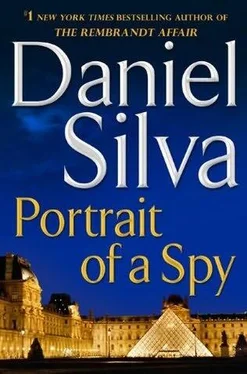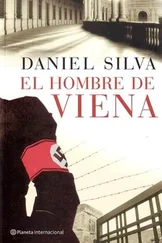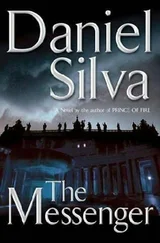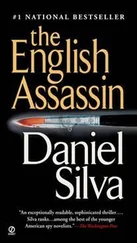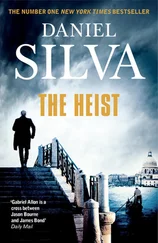He had been taken into custody within minutes of the attack and driven at high speed to New Scotland Yard, the headquarters of London’s Metropolitan Police Service. Upon arrival, he was delivered to a windowless interrogation room where he was treated for numerous cuts and abrasions and given a cup of tea, which he left untouched. A detective superintendent from the Counterterrorism Command arrived in short order. He examined Gabriel’s identification with the skepticism it deserved and then tried to determine the chain of events that led “Mr. Rossi” to draw a concealed firearm in Covent Garden the instant before a terrorist detonated his suicide belt. Gabriel had been tempted to pose a few questions of his own. Namely, he wanted to know why two Special Firearms Officers of the Met’s SO19 division had chosen to neutralize him rather than an obvious terrorist about to commit an act of indiscriminate mass murder. Instead, he responded to each of the detective’s inquiries by reciting a telephone number. “Call it,” he said, tapping the spot where the detective had written the number in his notebook. “It will ring in a very large building not far from here. You’ll know the name of the man who answers. At least you should.”
Gabriel did not know the identity of the officer who finally dialed the number, nor did he know precisely when the call was placed. He only knew that his internment inside New Scotland Yard lasted far longer than was necessary. Indeed, it was approaching midnight by the time the detective escorted him down a series of brightly lit corridors toward the entrance of the building. In the detective’s left hand was a manila envelope filled with Gabriel’s possessions. Judging from the size and shape, it did not contain a 9mm Beretta pistol.
Outside, the pleasant weather of the afternoon had given way to a driving rain. Waiting beneath the shelter of the glass portico, engine idling softly, was a dark Jaguar limousine. Gabriel accepted the envelope from the detective and opened the rear door of the car. Seated inside, one leg crossed elegantly over the other, was a man who looked as though he had been designed for the task. He wore a perfectly fitted charcoal gray suit and a silver necktie that matched the color of his hair. Normally, his pale eyes were inscrutable, but now they revealed the strain of a long and difficult night. As deputy director of MI5, Graham Seymour bore a heavy responsibility for protecting the British mainland from the forces of extremist Islam. And once again, despite the best efforts of his department, extremist Islam had won.
Though the two men had a long professional history, Gabriel knew little of Graham Seymour’s personal life. He knew that Seymour was married to a woman named Helen whom he adored and that he had a son who managed other people’s money for the New York branch of an important British financial house. Beyond that, Gabriel’s knowledge of Seymour’s private affairs was drawn from the Office’s voluminous file. He was a relic of Britain’s glorious past, a by-product of the upper middle classes who had been bred, educated, and programmed to lead. He believed in God but not with much fervor. He believed in his country but wasn’t blind to its shortcomings. He was good at golf and other games but was willing to lose to a lesser opponent in service of a worthy cause. He was a man admired and, most important, a man who could be trusted—an attribute rare among spies and secret policemen.
Graham Seymour was not, however, a man with unlimited patience, as evidenced by his dour expression as the Jaguar pulled into the street. He removed a copy of the next morning’s Telegraph from the seatback pocket and dropped it in Gabriel’s lap. The headline read REIGN OF TERROR. Beneath it were three photographs depicting the aftermath of the three attacks. Gabriel searched the photo of Covent Garden for any sign of his presence but saw only the victims. It was a picture of failure, he thought—eighteen people dead, dozens more critically injured, including one of the officers who had tackled him. And it was all because of the shot Gabriel had not been allowed to take.
“Bloody awful day,” Seymour said wearily. “I suppose the only way it could get any worse is if the press finds out about you. By the time the conspiracy theorists are finished, they’ll have the Islamic world believing that the attacks were plotted and carried out by the Office.”
“You can be sure that’s already the case.” Gabriel returned the newspaper and asked, “Where’s my wife?”
“She’s at your hotel. I have a team staying just down the hall.” Seymour paused, then added, “Needless to say, she’s not terribly pleased with you.”
“How can you tell?” Gabriel’s ears were still ringing from the concussion of the blast. He closed his eyes and asked how the SO19 teams had been able to locate him so quickly.
“As you might imagine, we have a wide array of technical means at our disposal.”
“Such as my mobile phone and your network of CCTV cameras?”
“Precisely,” Seymour said. “We were able to pinpoint you within a few seconds of receiving Chiara’s call. We forwarded the information to Gold Command, the Met’s operational crisis center, and they immediately dispatched two teams of Specialist Firearms Officers.”
“They must have been in the vicinity.”
“They were,” Seymour confirmed. “We were on high alert after the attacks in Paris and Copenhagen. A number of teams were already deployed in the financial district and spots where tourists tend to congregate.”
“So why did they take me down instead of the suicide bomber?”
“Because neither Scotland Yard nor the Security Service wanted a rerun of the Menezes fiasco. As a result of his death, a number of new guidelines and procedures were put in place to make sure nothing like it ever happens again. Suffice it to say a single warning does not meet the threshold for taking lethal action—even if the source happens to be named Gabriel Allon.”
“So eighteen innocent people died as a result?”
“What if he wasn’t a terrorist? What if he was another street performer, or someone with mental problems? We would have been burned at the stake.”
“But he wasn’t a street performer or a mental patient, Graham. He was a suicide bomber. And I told you so.”
“How did you know?”
“He might as well have been wearing a sign declaring his intentions.”
“Was it that obvious?”
Gabriel listed the attributes that first raised his suspicions and then explained the calculations that led him to conclude the terrorist intended to detonate his device at 2:37. Seymour shook his head slowly.
“I’ve lost count of how many hours we’ve spent training our police officers to spot potential terrorists, not to mention the millions of pounds we’ve poured into behavior-recognition software for CCTV. And yet a jihadi suicide bomber walked straight into Covent Garden, and no one seemed to notice. No one but you, of course.”
Seymour lapsed into a brooding silence. They were headed north along the floodlit white canyon of Regent Street. Gabriel leaned his head wearily against the window and asked whether the bomber had been identified.
“His name is Farid Khan. His parents immigrated to the United Kingdom from Lahore in the late seventies, but Farid was born in London. Stepney Green, to be precise,” Seymour said. “Like many British Muslims of his generation, he rejected the mild, apolitical religious beliefs of his parents and became an Islamist. By the late nineties, he was spending far too much time at the East London Mosque in Whitechapel Road. Before long, he was a member in good standing of the radical groups Hizb ut-Tahrir and al-Muhajiroun.”
Читать дальше
Конец ознакомительного отрывка
Купить книгу
